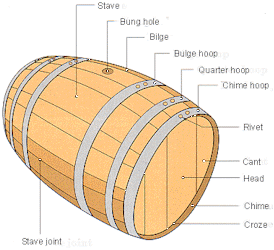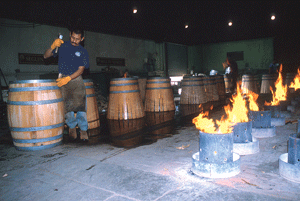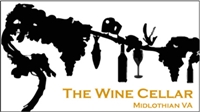Education Series – Anatomy of an Oak Barrel – Part 2
In part 2 of this oak barrel trilogy I will be discussing the cooperage process, which is the process of making the barrels themselves.You may recall from part 1 that this whole process starts in the forest. Coopers (those individuals who make barrels) have historically utilized wood from the region that they are familiar with, meaning that American Coopers made barrels from American oak and French from French oak, and so on. This is not the case anymore; both French and American oak is being shipped across the pond to Coopers in either country.
The first step of barrel creation is the creation of the staves, which are the slats or boards that form the sides of the barrel. Although the staves can be sawed, the preferred method is to split the wood by hand or by machine to help preserve as much of the natural wood grain as possible. Keeping the grain of the wood intact is crucial to making water-tight barrels. After the staves are shaped, they are stacked together and typically set outside to age in the elements, as wood normally would. Sometimes to quicken the process, the staves are dried in a kiln prior to being set out to age. This entire process can take up to several years. Once the staves are properly aged, they are shaped, notched, and beveled and then finally ready for inspection.

image credit:http://www.ukcraftfairs.com/coopering.asp
After the coopers have okayed the staves for barrel assembly, they start piecing them together to form the shape of a barrel. The staves are placed one by one inside of metal hoops (the chime hoop is first, then the quarter hoop, and then the bulge hoop; see picture) a process which the French call “mise en rose”, or “raising the barrel.” The phrase literally means “setting the rose,” most likely because unbent staves in the first hoop look like an open flower. The next step is to shape the barrel and set the 3 final hoops. This process is done by bending the wood staves via fire, water or steam. These methods soften the wood enough so that it can be bent and molded into the perfect shape, as well as allow for the three remaining rings to be riveted into place.
 The next step in the process is toasting the inside of the barrel. This process is sometimes done simultaneously with the heating of the staves for shaping, and sometimes may not be done at all. Barrels can be toasted using a variety of different heat sources. Whether it be gas fire, burning oak chips, convection, etc. the end result is that interior of the barrel staves are toasted to a specified level. Winemakers can specify ahead of time how “toasty” they want there barrel to be, from light to heavy toast. To achieve the varying toast levels, coopers use different time and temperature equations, developed through years of personal experience. Technology has helped in this process, as sensors can be placed inside of the barrels to know when the desired level of char has been achieved. In Part 3 of this series I will talk about how the varying toast levels affect wine flavor.
The next step in the process is toasting the inside of the barrel. This process is sometimes done simultaneously with the heating of the staves for shaping, and sometimes may not be done at all. Barrels can be toasted using a variety of different heat sources. Whether it be gas fire, burning oak chips, convection, etc. the end result is that interior of the barrel staves are toasted to a specified level. Winemakers can specify ahead of time how “toasty” they want there barrel to be, from light to heavy toast. To achieve the varying toast levels, coopers use different time and temperature equations, developed through years of personal experience. Technology has helped in this process, as sensors can be placed inside of the barrels to know when the desired level of char has been achieved. In Part 3 of this series I will talk about how the varying toast levels affect wine flavor.
The final step is the shaping and fitting of the barrel head. Larger staves are cut and bound together and then shaped to fit snuggly into the end of each barrel in grooves called crozes. Barrel heads are usually left un-toasted.
Actually the final final step is the branding of each barrel with the Cooperage house’s logo on the head of each barrel. Sometimes wineries pay to have their name burned into the head as well.
Again, I will give my disclaimer that this is a primer into the barrel making process. The process for making an oak barrel for wine or other spirit is a great skill and coopers apprentice for years before they are allowed to shape and toast the barrels themselves. Although this process is being done more and more by machine in order to make barrels cheaper (though not by much), there are still a lot of cooperages that do most of the work by hand.
Here are some links to cooperages that can give you more information into this really fascinating process.



